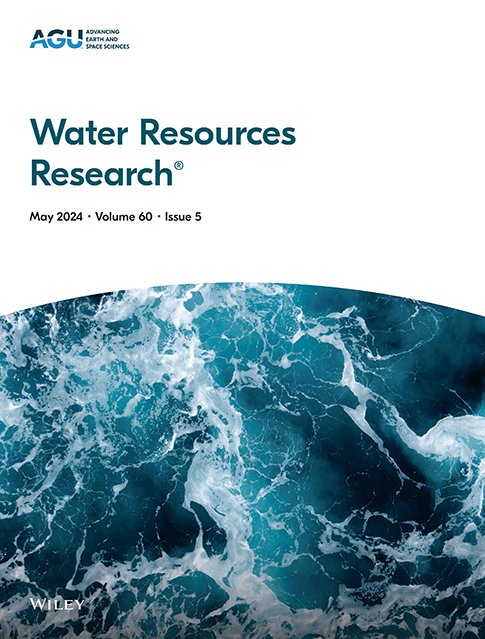Identifying and Quantifying the Impact of Climatic and Non-Climatic Drivers on River Discharge in Europe
IF 4.6
1区 地球科学
Q2 ENVIRONMENTAL SCIENCES
引用次数: 0
Abstract
Our water resources have changed over the last century through a combination of water management evolution and climate change. Understanding and decomposing the drivers of discharge changes is essential to preparing and planning adaptive strategies. To separate the response of catchment dynamics between climate change-related and other factors in discharge observations, we propose a methodology to compare discharge observations to discharge from a physically based model. The novelty lies in the fact that, to keep the comparison pertinent despite systematic biases in physically based model outputs, we compare both systems using a common framework of interpretation, a parsimonious model, which allows us to isolate trends in catchment dynamics from trends due to average changes in annual climate variables. The modeled system stands as the reference to reproduce changes only due to evolving climate dynamics. Comparing it to the interpretation framework applied to the observation system highlights the effect of the non-modeled factors on catchment dynamics and discharge, such as human intervention in rivers and water uptakes. We show that over Europe, especially in the South, the dominant explanations for discharge trends are non-climatic factors. Still, in some catchments of Northern Europe, climate change seems to be the dominating driver of change. We hypothesize that the dominating non-climatic factors are irrigation development, groundwater pumping and other human water usage. These results show the importance of including non-climatic factors in physically based models to understand the main drivers of discharge better and accurately project future changes.确定和量化气候和非气候驱动因素对欧洲河流流量的影响
在过去的一个世纪里,由于水资源管理的发展和气候的变化,我们的水资源发生了变化。了解和分解排放变化的驱动因素对于准备和规划适应性策略至关重要。为了区分流域动态在排放观测中与气候变化相关的因素和其他因素之间的响应,我们提出了一种比较排放观测与基于物理模型的排放的方法。新颖之处在于,尽管基于物理的模型输出存在系统性偏差,但为了保持比较的相关性,我们使用一个共同的解释框架(一个简约模型)来比较两个系统,该模型使我们能够将集水区动态的趋势与年度气候变量平均变化的趋势分离开来。所模拟的系统仅作为再现由于不断演变的气候动力学而引起的变化的参考。将其与应用于观测系统的解释框架进行比较,突出了非模型因素对流域动态和流量的影响,例如河流的人为干预和水的吸收。我们表明,在欧洲,特别是在南方,对排放趋势的主要解释是非气候因素。然而,在北欧的一些流域,气候变化似乎是变化的主要驱动因素。我们假设主要的非气候因素是灌溉发展、地下水抽取和其他人类用水。这些结果表明,在基于物理的模式中纳入非气候因子对于更好地理解排放的主要驱动因素和准确预测未来变化的重要性。
本文章由计算机程序翻译,如有差异,请以英文原文为准。
求助全文
约1分钟内获得全文
求助全文
来源期刊

Water Resources Research
环境科学-湖沼学
CiteScore
8.80
自引率
13.00%
发文量
599
审稿时长
3.5 months
期刊介绍:
Water Resources Research (WRR) is an interdisciplinary journal that focuses on hydrology and water resources. It publishes original research in the natural and social sciences of water. It emphasizes the role of water in the Earth system, including physical, chemical, biological, and ecological processes in water resources research and management, including social, policy, and public health implications. It encompasses observational, experimental, theoretical, analytical, numerical, and data-driven approaches that advance the science of water and its management. Submissions are evaluated for their novelty, accuracy, significance, and broader implications of the findings.
 求助内容:
求助内容: 应助结果提醒方式:
应助结果提醒方式:


